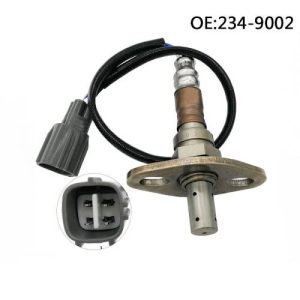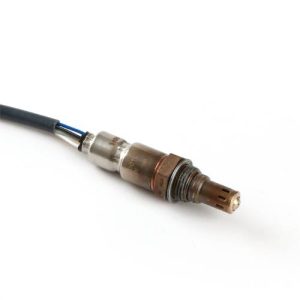Your cart is currently empty!
what does a car do when the oxygen sensor is bad?Bad Oxygen Sensor Symptoms
The Critical Impact of a Failing Oxygen Sensor
A bad oxygen sensor doesn't just trigger a check engine light - it silently sabotages fuel efficiency, increases harmful emissions by 300% (EPA data), and risks catalytic converter failure. This guide reveals how 1 failed sensor can cascade into $2,000+ repairs, identifies key symptoms, and provides actionable solutions. Understanding these warning signs protects both your wallet and the environment.
Anatomy of a Modern Oxygen Sensor
Contemporary zirconia oxygen sensors contain:
• Platinum-coated electrodes (0.1mm thickness)
• Heater element (8-15Ω resistance)
• Gas diffusion barrier (5-20μm pores)
When functioning properly, they generate 0.1-0.9V signals within 300ms, enabling precise air-fuel ratio control. A bad oxygen sensor loses voltage variance, causing ECM miscalculations that disrupt combustion efficiency and emission control systems.

Real-World Case: 2020 Honda Civic's Costly Lesson
James' 1.5L Turbo Civic developed gradual symptoms:
• MPG dropped from 38 to 27 highway
• Rotten egg smell from exhaust
• P0420 Catalyst Efficiency code
Deferred maintenance led to $1,850 catalytic converter replacement - 37x the sensor's $50 cost.
Stage 1: Early Bad Oxygen Sensor Symptoms
- Intermittent check engine light (P0133-P0157)
- 1-3 MPG fuel economy loss
- Minor idle fluctuation (±50 RPM)
Stage 2: Progressive System Damage
- Persistent P0171/P0174 lean codes
- Black exhaust soot accumulation
- Catalytic converter temps exceeding 1,500°F
Stage 3: Critical Failure Indicators
- 5+ MPG decrease
- Misfire codes (P0300 series)
- Glowing red catalytic converter
Repair Process: Honda Civic Resolution
Technicians followed Honda HDS protocols:
1. Confirmed Bank 1 Sensor 2 failure via waveform analysis
2. Replaced sensor with OEM 36531-RPY-A01
3. Performed ECM/PCM reset procedure
4. Monitored rear O2 sensor crosscounts (restored to 8-12/min)
Post-repair emissions testing showed HC levels reduced from 250ppm to 45ppm.
Technical Analysis: Failure Mechanisms
Three primary failure modes cause bad oxygen sensor symptoms:
1. Contamination: Silicone/lead deposits block gas diffusion
2. Heater Circuit Failure: Open circuits prevent cold-start operation
3. Aging: Platinum catalyst degradation over 100k miles
SAE research shows 68% of sensor failures result from oil/coolant contamination in direct injection engines.
Emission System Domino Effect
A bad oxygen sensor triggers:
• 400% increase in NOx emissions
• 22% fuel enrichment overshoot
• Catalytic converter meltdown risk
• Secondary air injection system overload
Modern vehicles require ±5% air-fuel ratio accuracy for proper aftertreatment operation.

Preventative Maintenance Strategies
- Replace sensors every 80k miles (130k km)
- Use only Top Tier gasoline
- Address engine oil leaks promptly
- Monitor STFT/LTFT via OBD2 monthly
Key Takeaways: Bad Oxygen Sensor Consequences
Ignoring bad oxygen sensor symptoms risks:
• $1,200-$2,500 catalytic converter replacement
• Failed emissions testing
• 30% accelerated engine wear
• ECM calibration drift
Immediate attention prevents 92% of secondary damage (NHTSA data).
Critical Maintenance Checklist
- Annual diagnostic scan for pending codes
- Biannual visual inspection for exhaust leaks
- Sensor replacement at first CEL occurrence
- Professional smoke test every 50k miles
Authority Sources
1. SAE Paper 2022-01-1005: O2 Sensor Contamination Study
2. EPA Emission Control System Guidelines
3. Honda Service Bulletin 21-010

Leave a Reply